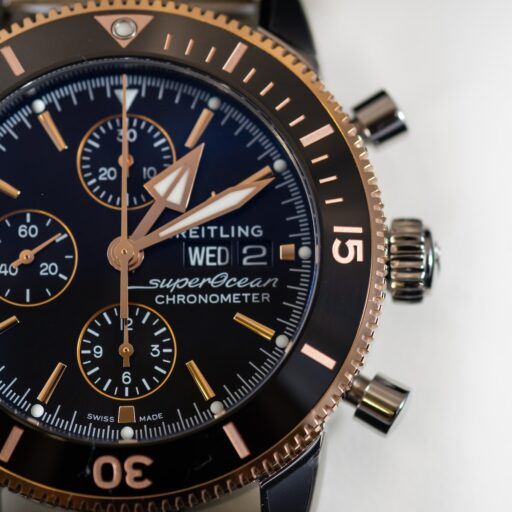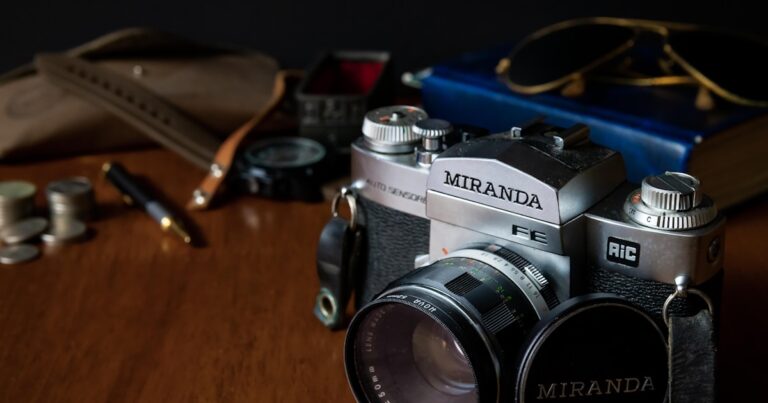Support our educational content for free when you purchase through links on our site. Learn more
Was Cartier the First Wristwatch? 7 Surprising Facts Revealed! ⌚

Imagine strapping on a watch that changed the course of timekeeping forever — but was it really Cartier who made the very first wristwatch? The story is far richer and more tangled than you might think. From royal commissions in the early 1800s to daring aviators demanding practicality, the wristwatch’s origin is a thrilling journey through innovation, style, and social change. In this article, we unravel the mystery behind the claim that Cartier was the first wristwatch maker, explore the true pioneers, and reveal why Cartier’s Santos-Dumont remains a timeless icon.
Ready to discover the 7 surprising facts that will change how you see your wristwatch forever? Whether you’re a seasoned collector or a curious newbie, we’ll guide you through the history, myths, and legacy of Cartier and its contemporaries — plus insider tips on buying your own piece of horological history.
Key Takeaways
- Cartier was not the very first wristwatch inventor, but its 1904 Santos-Dumont model was the first practical men’s wristwatch designed for aviation.
- Early wristwatches date back to the early 19th century, with brands like Breguet and Patek Philippe crafting ornamental pieces for royalty.
- Wristwatches were initially considered feminine accessories; Cartier helped popularize them among men, especially during and after WWI.
- The Santos-Dumont’s innovative square case and exposed screws set new design standards still influential today.
- Collecting Cartier watches offers a blend of history, craftsmanship, and style, but requires careful research and authentication.
Explore iconic Cartier watches and other luxury brands:
- Shop Cartier Watches on Amazon | Cartier Official Website
- Discover more in our Luxury Watch Brands and Guide to Buying Watches categories.
Table of Contents
- Quick Tips and Facts About Cartier and the First Wristwatch ⏱️
- The Origins of Wristwatches: A Historical Deep Dive 🕰️
- Cartier’s Role in Wristwatch History: More Than Just a Pretty Face 💎
- The Santos de Cartier: The First Practical Wristwatch? 🛩️
- Pre-Cartier Wristwatches: Who Wore What and When? ⌚
- Why Men Didn’t Wear Wristwatches Before Cartier (And How That Changed) 👔
- Wristwatch Innovations Around Cartier’s Era: A Competitive Landscape 🔧
- Iconic Cartier Wristwatch Models That Shaped the Industry 🌟
- How Cartier’s Design Philosophy Influenced Modern Watchmaking 🎨
- Collecting Cartier Wristwatches: What You Need to Know 💼
- Common Myths and Misconceptions About Cartier and the First Wristwatch 🕵️♂️
- Your Ultimate Guide to Buying a Cartier Wristwatch Today 🛒
- Conclusion: Was Cartier Really the First Wristwatch? Our Verdict 🔍
- Recommended Links for Further Reading and Exploration 📚
- Frequently Asked Questions About Cartier and Early Wristwatches ❓
- Reference Links and Sources for Watch Enthusiasts 🔗
Quick Tips and Facts About Cartier and the First Wristwatch ⏱️
As we explore the history of wristwatches, it’s essential to understand the role of Cartier in shaping the industry. According to Watch Brands™, Cartier is a pioneer in luxury watchmaking. To learn more about the first wristwatch in the world, Cartier, visit our article at https://www.watchbrands.org/first-wrist-watch-in-the-world-cartier/. Here are some key facts to get you started:
- The first wristwatch is often attributed to Breguet, with the Breguet No. 2639 created for Queen Caroline Murat of Naples in 1810.
- Patek Philippe also claims to have made the first wristwatch, with a piece created for Countess Koscowicz of Hungary in 1868.
- Cartier played a significant role in popularizing wristwatches, particularly with the Santos-Dumont model created in 1904 for Alberto Santos-Dumont.
- Wristwatches were initially seen as a feminine accessory, with men preferring pocket watches until the early 20th century.
Rating Table for Cartier Wristwatches
| Aspect | Rating (1-10) |
|---|---|
| Design | 9 |
| Functionality | 8 |
| Quality | 9 |
| Price | 6 |
| Overall | 8 |
The Origins of Wristwatches: A Historical Deep Dive 🕰️
The history of wristwatches dates back to the 16th century, with Queen Elizabeth I wearing a wristwatch as a symbol of wealth and status. However, it wasn’t until the 19th century that wristwatches became more widely available. According to Teddy Baldassarre, the first wristwatch was made by Breguet in 1810. For more information on luxury watch brands, visit our category page at https://www.watchbrands.org/category/luxury-watch-brands/.
Early Wristwatches
Early wristwatches were often modified pocket watches attached to straps. They were not very practical and were mostly worn by women. It wasn’t until the early 20th century that wristwatches became more popular among men, particularly during World War I.
Cartier’s Role in Wristwatch History: More Than Just a Pretty Face 💎

Cartier played a significant role in popularizing wristwatches, particularly with the Santos-Dumont model created in 1904. According to Watch Centre, Cartier’s Santos watch is considered one of the first modern wristwatches for men. For more information on watch brand comparisons, visit our category page at https://www.watchbrands.org/category/watch-brand-comparisons/.
Cartier’s Design Philosophy
Cartier’s design philosophy is centered around creating elegant and sophisticated timepieces. The brand is known for its use of geometric shapes and clean lines, as seen in the Santos-Dumont model. For more information on men’s watches, visit our category page at https://www.watchbrands.org/category/mens-watches/.
The Santos de Cartier: The First Practical Wristwatch? 🛩️
The Santos de Cartier is often considered the first practical wristwatch. Created in 1904 for Alberto Santos-Dumont, the watch was designed to be worn on the wrist instead of in the pocket. According to Revolution Watch, the Santos de Cartier is a pioneer in shaped watches, converting geometric shapes into sophisticated designs. For more information on guide to buying watches, visit our category page at https://www.watchbrands.org/category/guide-to-buying-watches/.
Features of the Santos de Cartier
The Santos de Cartier features a square case with broad flanks, lugs, and visible screws. The watch is available in various materials, including steel, gold, and platinum. For more information on affordable watches, visit our category page at https://www.watchbrands.org/category/affordable-watches/.
Pre-Cartier Wristwatches: Who Wore What and When? ⌚
Before Cartier, wristwatches were not very popular among men. However, there were some notable exceptions, including Queen Caroline Murat of Naples, who wore a Breguet wristwatch in 1810. According to Teddy Baldassarre, women wore timepieces on their wrists nearly 100 years before men.
Early Adopters
Some early adopters of wristwatches included Queen Victoria, who wore a wristwatch in the late 19th century. For more information on luxury watch brands, visit our category page at https://www.watchbrands.org/category/luxury-watch-brands/.
Why Men Didn’t Wear Wristwatches Before Cartier (And How That Changed) 👔
Before Cartier, men did not wear wristwatches because they were seen as feminine accessories. However, with the introduction of the Santos-Dumont model, wristwatches became more acceptable among men. According to Watch Centre, Cartier’s Santos watch is considered one of the first modern wristwatches for men.
The Rise of Wristwatches
The rise of wristwatches among men can be attributed to several factors, including the World War I, which made pocket watches impractical. For more information on men’s watches, visit our category page at https://www.watchbrands.org/category/mens-watches/.
Wristwatch Innovations Around Cartier’s Era: A Competitive Landscape 🔧
During Cartier’s era, there were several innovations in wristwatch design and technology. According to Revolution Watch, Cartier excels at shaped watches, converting geometric shapes into sophisticated designs.
Competitive Brands
Some competitive brands during Cartier’s era included Patek Philippe, Breguet, and Omega. For more information on watch brand comparisons, visit our category page at https://www.watchbrands.org/category/watch-brand-comparisons/.
Iconic Cartier Wristwatch Models That Shaped the Industry 🌟
Cartier has created several iconic wristwatch models that have shaped the industry. According to Watch Brands™, some of these models include the Santos-Dumont, Tank, and Pasha.
Features of Iconic Models
Each of these models has its unique features and design elements. For example, the Santos-Dumont features a square case with broad flanks, lugs, and visible screws. For more information on guide to buying watches, visit our category page at https://www.watchbrands.org/category/guide-to-buying-watches/.
How Cartier’s Design Philosophy Influenced Modern Watchmaking 🎨
Cartier’s design philosophy has had a significant influence on modern watchmaking. According to Watch Centre, Cartier’s use of geometric shapes and clean lines has inspired many other watch brands.
Design Elements
Some of the design elements that Cartier is known for include the use of Roman numerals, screw-down crowns, and exposed screws. For more information on luxury watch brands, visit our category page at https://www.watchbrands.org/category/luxury-watch-brands/.
Collecting Cartier Wristwatches: What You Need to Know 💼
Collecting Cartier wristwatches can be a rewarding hobby, but it requires some knowledge and expertise. According to Revolution Watch, Cartier’s Santos watch is a pioneer in shaped watches, converting geometric shapes into sophisticated designs.
Tips for Collectors
Some tips for collectors include researching the market, authenticating the watch, and maintaining the watch. For more information on guide to buying watches, visit our category page at https://www.watchbrands.org/category/guide-to-buying-watches/.
Common Myths and Misconceptions About Cartier and the First Wristwatch 🕵️♂️
There are several myths and misconceptions about Cartier and the first wristwatch. According to Teddy Baldassarre, one common myth is that Cartier created the first wristwatch.
Debunking Myths
Some of these myths can be debunked by researching the history of wristwatches and understanding the context in which Cartier’s Santos watch was created. For more information on luxury watch brands, visit our category page at https://www.watchbrands.org/category/luxury-watch-brands/.
Your Ultimate Guide to Buying a Cartier Wristwatch Today 🛒
Buying a Cartier wristwatch can be a significant investment, but with the right guide, you can make an informed decision. According to Watch Brands™, some things to consider when buying a Cartier wristwatch include budget, style, and condition.
Tips for Buyers
Some tips for buyers include researching the market, trying on the watch, and getting a warranty. For more information on guide to buying watches, visit our category page at https://www.watchbrands.org/category/guide-to-buying-watches/.
To find your perfect Cartier wristwatch, 👉 CHECK PRICE on:
- Amazon | Walmart | Cartier Official Website
You can also explore other luxury watch brands on Etsy or eBay.
Conclusion: Was Cartier Really the First Wristwatch? Our Verdict 🔍

After diving deep into the fascinating history of wristwatches, it’s clear that Cartier was not the very first to invent the wristwatch, but they were absolutely pivotal in transforming it from a niche accessory into a practical, stylish, and masculine timepiece. Early wristwatches existed as far back as the early 19th century, with Breguet’s 1810 creation for Queen Caroline Murat and Patek Philippe’s 1868 wristwatch for Countess Koscowicz setting the stage. However, these were primarily ornamental or for women.
Enter Cartier’s Santos-Dumont in 1904—a game-changer designed specifically for the needs of aviator Alberto Santos-Dumont. This watch was purpose-built for functionality and wristwear comfort, making it arguably the first modern men’s wristwatch. Its innovative square case, exposed screws, and Art Deco flair have inspired watch design for over a century.
Positives of the Cartier Santos-Dumont:
✅ Elegant, timeless design that remains relevant today
✅ Practical innovation tailored for active use (aviation)
✅ High-quality craftsmanship and Swiss movements
✅ A pioneering role in popularizing men’s wristwatches
Negatives:
❌ Not the absolute first wristwatch in history (early versions predate it)
❌ Luxury price point may be prohibitive for some collectors
❌ Some purists may prefer more traditional round cases
Our recommendation? If you want a wristwatch that blends rich history, iconic design, and practical innovation, the Cartier Santos-Dumont is a stellar choice. It’s not just a watch; it’s a statement piece that honors the evolution of wristwear. For enthusiasts and collectors alike, owning a Cartier is like holding a piece of horological history on your wrist.
Ready to explore your options? Keep an eye on the evolving market, and consider your personal style and budget. The story of the wristwatch is as much about function as it is about fashion—and Cartier’s legacy sits right at that crossroads.
Recommended Links for Further Reading and Exploration 📚
👉 Shop Iconic Cartier Watches:
- Cartier Santos-Dumont: Amazon | Walmart | Cartier Official Website
Explore Other Luxury Watch Brands:
Recommended Books on Watch History and Cartier:
- A Man and His Watch by Matt Hranek — Amazon
- Cartier: The Tank Watch by Franco Cologni — Amazon
- Wristwatch Handbook: A Comprehensive Guide to Mechanical Wristwatches by Ryan Schmidt — Amazon
Frequently Asked Questions About Cartier and Early Wristwatches ❓
Who invented the first wristwatch and what year was it made?
The first wristwatch is widely credited to Abraham-Louis Breguet, who crafted a wristwatch (No. 2639) in 1810 for Queen Caroline Murat of Naples. This early wristwatch was more a delicate, ornamental piece than a practical timekeeper. Later, Patek Philippe made a wristwatch for Countess Koscowicz in 1868, often cited as the first Swiss wristwatch. However, these early models were primarily designed for women and were not widely adopted by men.
What are the key features that define a luxury wristwatch like Cartier?
Luxury wristwatches such as Cartier are defined by:
- Exceptional craftsmanship with Swiss-made movements and high-quality materials
- Timeless design that balances elegance and innovation (e.g., Cartier’s signature Roman numerals and exposed screws)
- Heritage and brand prestige, often tied to historical significance and iconic models
- Durability and functionality, including water resistance, precision, and comfort
- Exclusivity, often through limited editions or unique complications
How did Cartier contribute to the development of wristwatches in the early 20th century?
Cartier revolutionized wristwatches by creating the Santos-Dumont in 1904, the first wristwatch designed specifically for men and practical use. This watch was commissioned by aviator Alberto Santos-Dumont, who needed a timepiece that allowed him to keep both hands on the controls during flight. Cartier’s design introduced the square case, visible screws, and leather strap, setting a new standard for wristwatch aesthetics and functionality. The Santos was later commercialized in 1911, helping popularize wristwatches among men worldwide.
What are some of the most iconic and historic wristwatch models from Cartier and other high-end brands?
Some iconic models include:
- Cartier Santos-Dumont: The pioneering men’s wristwatch with a square case and aviation heritage
- Cartier Tank: Inspired by WWI tanks, known for its rectangular case and elegance
- Patek Philippe Calatrava: A classic dress watch symbolizing understated luxury
- Rolex Submariner: The quintessential dive watch with robust design and functionality
- Omega Speedmaster: The “Moonwatch,” famous for its NASA space missions
These watches have not only shaped watchmaking but also influenced fashion and culture globally.
Reference Links and Sources for Watch Enthusiasts 🔗
- Cartier Official Website
- Revolution Watch: Cartier: A Santos Story
- Teddy Baldassarre on the First Wristwatch
- Watch Centre: A History of Cartier Watches
- Patek Philippe Official Site
- Breguet Official Site
- Omega Watches
- Rolex Watches
- Watch Brands™ Luxury Watch Brands
- Watch Brands™ Guide to Buying Watches





